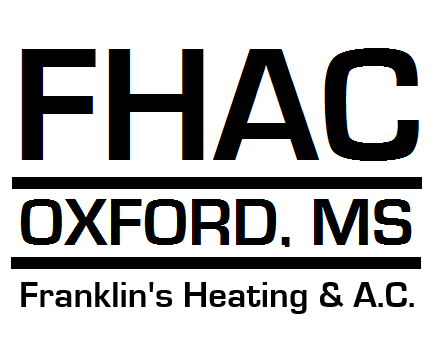
You shouldn’t be forced to compromise on comfort or spend a lot to keep your house at a pleasant setting during warm days.
But what is the ideal temperature, exactly? We go over recommendations from energy professionals so you can find the best temp for your loved ones.
Here’s what we recommend for the most energy-efficient setting for air conditioning in Oxford.
Recommended Thermostat Settings for Summer
Most families find placing the thermostat at 72-73 degrees is most comfortable. However, if there’s a major difference between your indoor and outside warmth, your cooling bills will be larger.
This is our advice based on the U.S. Department of Energy (DOE) and ENERGY STAR®.
While at home: 78 degrees. While that appears hot, there are methods you can keep your residence cool without having the AC running constantly.
Keeping windows and blinds down during the day keeps chilled air where it needs to be—inside. Some window coverings, including honeycomb shades or plantation shutters, are designed to deliver extra insulation and enhanced energy conservation.
If you have ceiling fans in your home, the DOE says you can increase thermostat settings about 4 degrees hotter without sacrificing comfort. That’s because they cool by a windchill effect. Since they cool people, not rooms, turn them off when you leave a room.
If 78 degrees still feels too warm at first glance, try conducting a trial for about a week. Start by raising your thermostat to 78 degrees while you’re at your residence. Then, gradually decrease it while following the suggestions above. You may be astonished at how refreshed you feel at a hotter temperature setting.
While away: 88 degrees. There’s no rationale for keeping the AC working all day while your residence is vacant. Moving the temp 7–10 degrees warmer can save you an estimated 5–15% on your electricity expenses, according to the DOE.
When you arrive home, don’t be tempted to set your thermostat under 78 to cool your home faster. This isn’t useful and usually leads to a bigger AC expense.
A programmable thermostat is a useful approach to keep your settings controlled, but it requires setting programs. If you don’t set programs, you run the risk of forgetting to change the set temperature when you go.
If you’re looking for a handy fix, think about installing a smart thermostat. This thermostat links with your phone, so it knows when you’re at home and when you’re gone. Then it intuitively adjusts temperature settings for the biggest savings. How much exactly? An estimated $180 annually on heating and cooling, according to ENERGY STAR.
Another benefit of having a smart thermostat? You can use your phone to watch and adjust temperature settings from almost anywhere.
While sleeping: Around 70 degrees. While ENERGY STAR recommends 82 degrees, that may be unpleasant for many families. Most people sleep better when their bedroom is chilly, so that’s why the National Sleep Foundation recommends 60–67 degrees. But that might be too chilly, based on your pajama and blanket preference.
We advise using a comparable test over a week, setting your thermostat higher and gradually lowering it to find the right temperature for your house. On cool nights, you may discover keeping windows open at night and using a ceiling fan is a preferable idea than running the air conditioner.
More Ways to Use Less Energy During Warm Weather
There are other ways you can save money on utility bills throughout hot weather.
- Install an energy-efficient cooling system. Central air conditioners only last about 12–15 years and lose efficiency as they age. A new air conditioner can keep your house comfier while keeping energy expenses low.
- Schedule yearly air conditioner service. Routine air conditioner maintenance keeps your system running like it should and might help it run more efficiently. It can also help extend its life span, since it allows professionals to spot little troubles before they cause a major meltdown.
- Put in new air filters often. Use manufacturer instructions for changing your air filter. A dusty filter can cause your system to short cycle, or switch on and off too often, and drive up your energy.
- Check attic insulation levels. Almost 90% of homes in the USA don’t have enough insulation, according to the Insulation Institute. Many southern climates require 13–14” of attic insulation, while northern climates should have 16–18”.
- Have your ductwork examined. Ductwork that has loosened over time can seep cold air into your attic, walls or crawl space. This can lead to huge comfort problems in your residence, including hot and cold spots.
- Seal openings, doors and windows. Keep muggy air in its place by plugging holes. You can also caulk or weather strip doors to keep more conditioned air indoors.
Save More Energy During Warm Weather with Franklin's Heating & Air Conditioning, Inc
If you want to use less energy during hot weather, our Franklin's Heating & Air Conditioning, Inc pros can help. Give us a call at 662-281-1231 or contact us online for additional information about our energy-saving cooling products.
